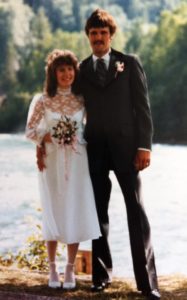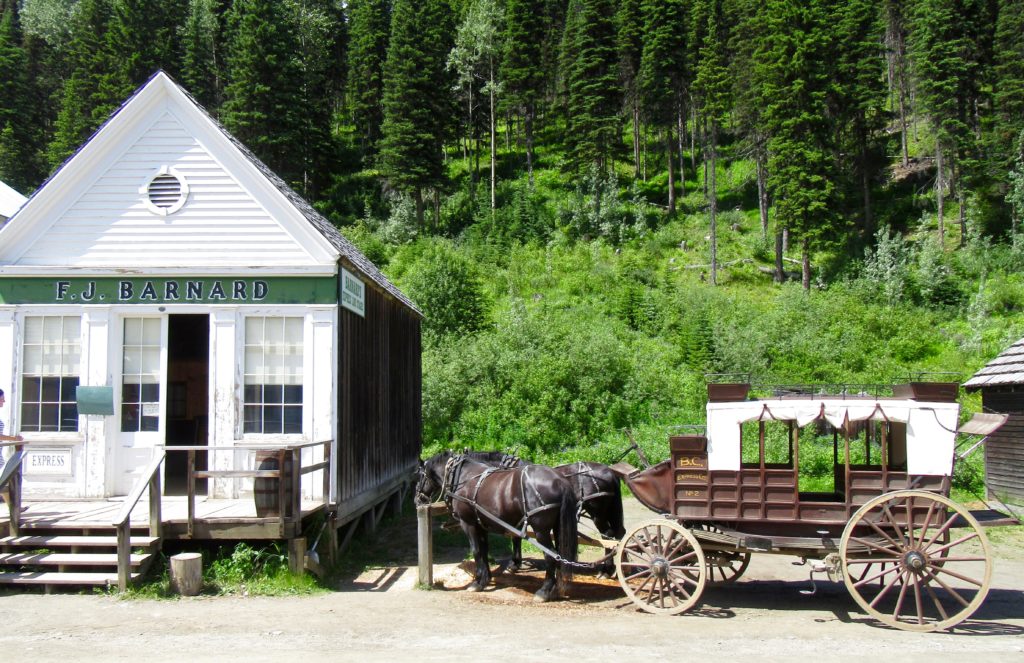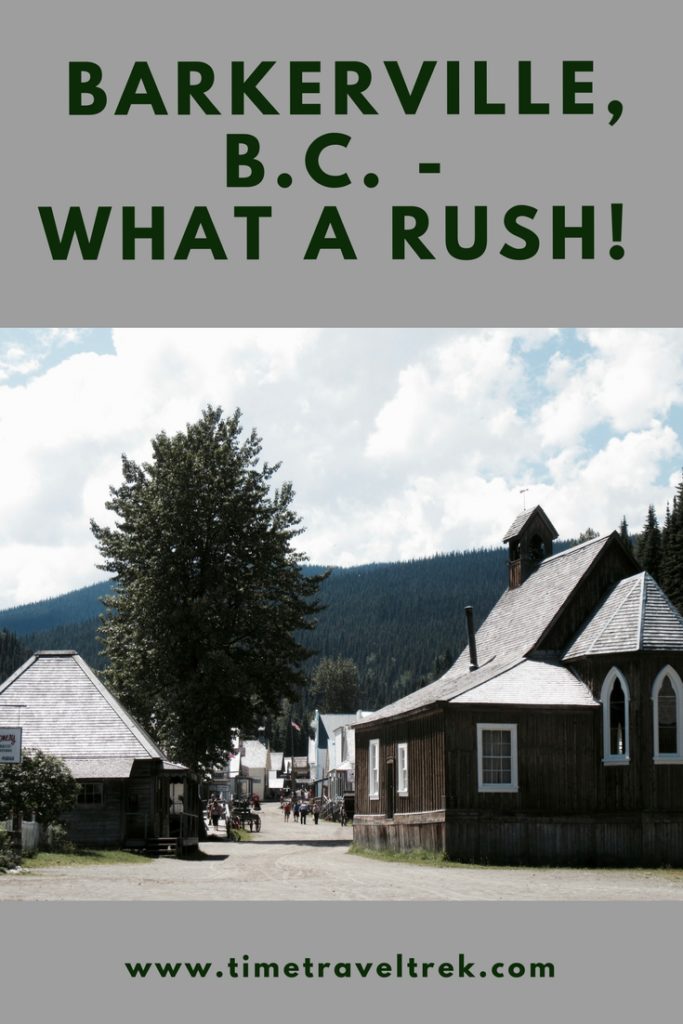Most people have heard of the California ‘49ers. Equally as many know of the Klondike stampeders heading up to the Yukon in 1898. But what about the gold fever surrounding Barkerville, British Columbia? Barkerville’s story lies smack dab in the middle of the western gold rush timeline.
Disclosure: This post contains affiliate links. If you buy something from one of our affiliates, we receive a small commission at no extra charge to you. Thanks for helping to keep our blog up and running!
Table of Contents
Barkerville Connections – What a Rush!
I have three reasons for having a soft spot for the Cariboo gold rush story. Firstly, because I lived in the Cariboo as a child.
Secondly, because my grandpa – William Hill – worked the old slag heaps in Barkerville, searching for overlooked gold in the 1930s. He also searched for gold in the nearby abandoned mining town of Quesnelle Forks in 1940s.

And finally, we chose that abandoned mining town, at the junction of the Cariboo and Quesnel Rivers, as the site of our wedding more than a few moons ago.
Since we were driving by Barkerville – on our way to paddle the Bowron Lakes Canoe Circuit – with friends who had never heard of Barkerville’s epic tale, we just had to make a little detour and show it off.
Billy Barker’s Story
William ‘Billy’ Barker was a working-class English prospector. He started in the California goldfields in the mid-1800s. As the gold played out, Barker joined the thousands of other miners who headed north to what is now British Columbia. The goldseekers followed the Fraser River inland in search of rich ore. Eventually, Billy and many other miners found their way to Cariboo.
‘Dutch Bill’ – also known as William Dietz – made the first strike. William’s Creek, which runs through Barkerville, is named after him. A town grew up around the strike. It was called Richfield. Billy Barker tried his luck a little further downstream of Richfield.
On August 17, 1862, Billy and his seven partners found gold at 52 feet. Billy’s mine-shaft was the deepest around. In just two days, the miners pulled out over 1700 grams (60 ounces) of gold. The rush was on.
 Barkerville and the Cariboo...Shop on Amazon
Barkerville and the Cariboo...Shop on Amazon
Barkerville’s Golden Hours
Most of the gold was found during the first five years of Cariboo gold rush. William’s Creek and two of its tributaries produced $30,000,000 of gold between 1861 and 1898.
Barkerville became the heart of the Cariboo when a 650-kilometre (404-mile) wagon road from Yale, B.C. was built to haul gear in and gold out of the goldfields. It was finished in 1865. Barkerville was the final stop along the road.

A Ghost Town Today
Today, Barkerville is the largest living-history museum in western North America. Today, the tourist attraction features over 100 restored buildings. Naturally there are stagecoach rides, live theatre, old-fashioned photo studios and guided tours. Finally, don’t forget to watch for costumed interpreters roaming the streets, playing the roles of historic characters.
Barkerville: By the Numbers
- In 1868, the town is destroyed by fire and quickly rebuilt
- The town’s namesake dies a pauper in Victoria, B.C. in 1894
- Barkerville is designated a Canadian National Historic Site in 1924
- There are 107 heritage buildings in Barkerville
- This ghost town has 62 replica buildings
- It was made a Provincial Heritage Property in 1958
- There are between 50,000-60,000 people visit the site annually
When You Go
Barkerville is located in central British Columbia, about 85 kilometres (53 miles) east of Quesnel, at the edge of the Cariboo Mountains.
Want to read more about travel through the Cariboo? Check out these posts:
History of Ashcroft, BC
Exploring the Historic Hat Creek Ranch
If you want to brush up on the lure and lore gold rushes before you arrive, check out these books:
- Barkerville and the Cariboo Goldfields
- The Klondike Fever: The Life and Death of the Last Great Gold Rush
- California Gold Rush: A Captivating Guide to One of the Most Significant Events in the History of the United States of America and Its Impact on Native American Tribes (U.S. History)

Leave a Reply